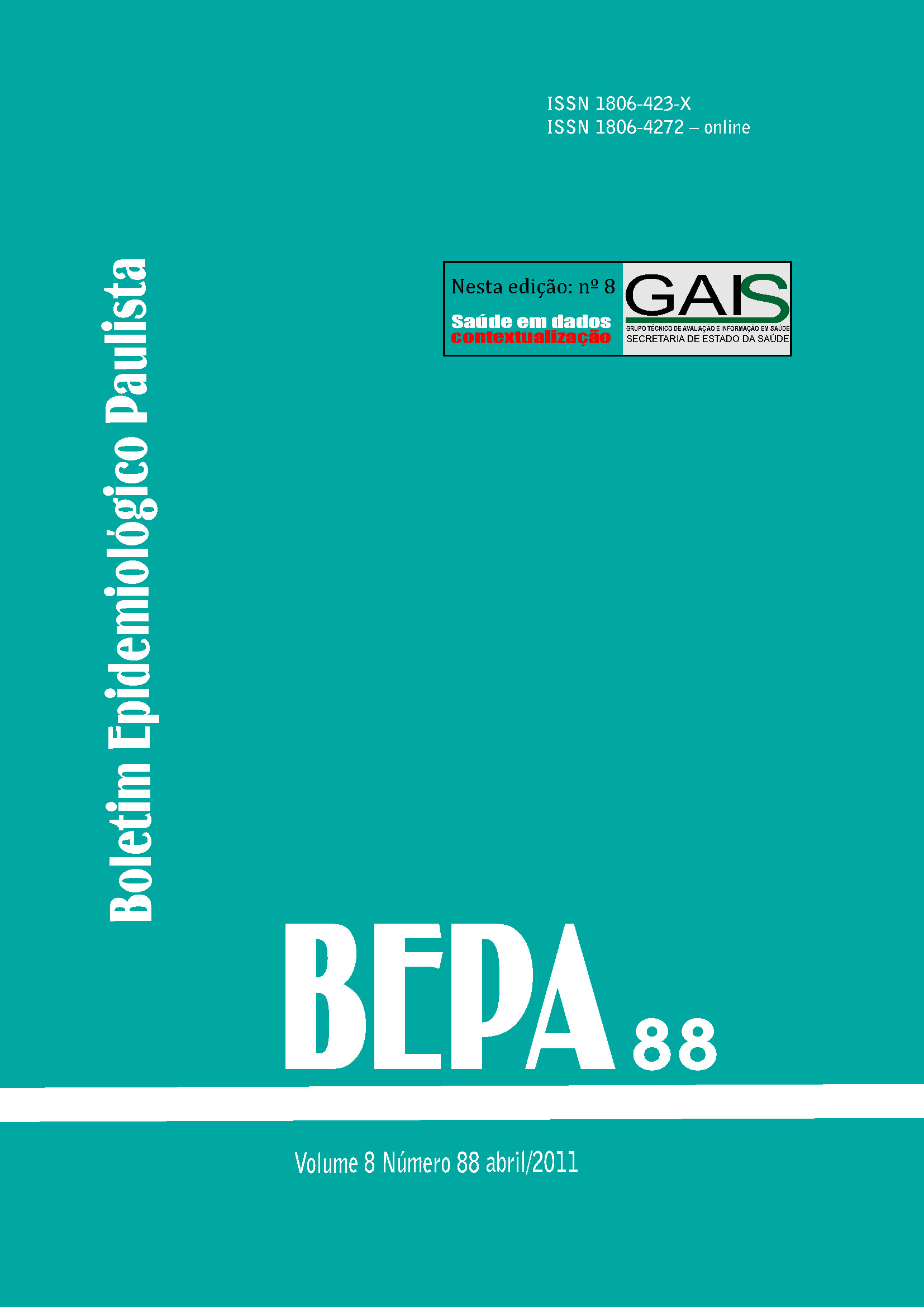Resumen
A epidemia de dengue ocorrida no verão de 2006/2007 foi a maior registrada no Estado de São Paulo, até então. Os municípios de Hortolândia e Sumaré apresentaram níveis importantes de transmissão. Para reduzir rapidamente a quantidade de mosquitos alados e auxiliar a interrupção da transmissão nas áreas com maior número de casos, a Sucen organizou equipes para realizar aplicação domiciliar de inseticida a ultra baixo volume (UBV) com atomizadores costais portáteis, complementando as atividades dos municípios, que eram principalmente de eliminação dos criadouros. Este estudo tem como objetivo avaliar o trabalho dessas equipes, realizado em abril de 2007, nos municípios citados. Em Hortolândia, realizou-se estudo descritivo comparando-se medições de infestação e de ocorrência de casos antes e depois das referidas atividades. Em Sumaré, foi avaliada apenas a ocorrência de casos, tendo sido realizado inquérito para avaliar a opinião das pessoas sobre a atividade. Observou-se que houve redução acentuada na positividade e densidade de ovos nas armadilhas, instaladas na semana seguinte à realização da atividade de controle químico. Na segunda semana já ocorreu um aumento na positividade e densidade de ovos. Não se pôde determinar o efeito da nebulização domiciliar sobre o número de casos porque ela foi realizada com a transmissão já em queda. A aceitação e avaliação do efeito da atividade pela população são boas. Concluiu-se que para que essas medidas sejam efetivas a remoção dos criadouros tem de ser drástica e se repetir nas semanas seguintes auxiliada por um trabalho educativo intenso para evitar a formação de novos criadouros
Citas
Teixeira MG, Costa MCN, Barreto F, Barreto ML. Dengue: twenty-five years since reemergence in Brazil. Cadernos de Saúde Pública. 2009 Suppl 1;25:7-18.
CVE - Centro de Vigilância Epidemiológica. Dengue, dados estatísticos [base de dados na internet]. São Paulo: Secretaria de Estado da Saúde.[s.d.] [acesso em 4 jun 2010]. Disponível em: http:// www.cve.saude.sp.gov.br/htm/zoo/ dengue_dados.html.
Secretaria de Estado da Saúde, Superintendência de Controle de Endemias. Normas e recomendações técnicas para vigilância e controle do Aedes aegypti no Estado de São Paulo. São Paulo. 2006.
Gratz N. Space sprays for the control of Aedes aegypti in South Asia and the Western Pacific. Dengue Bulletin [períódico na internet]. 1999 dez [acesso em 15 mai 2010];23. Disponível em: www.searo.who.int/en/Section10/ Section332/Section521_2439.htm.
OMS - Regional guidelines on dengue/ DHF prevention and control. (Regional Publication 29/1999) [acesso em 30 abr 2010]. Disponível em: http:// www.cepis.ops-oms.org/bvsair/e/ repindex/repi78/pagina/text/fulltext/ book.pdf.
CIIAGRO - Centro Integrado de Informações Agrometeorológicas. CIIAGRO Online [base de dados na internet]. São Paulo: Instituto Agronômico [s.d.] [acesso em 14 jun 2010]. Disponível em: http:// www.ciiagro.sp.gov.br/ciiagroonline/.
Alves MCGP, Silva NN da. Simplificação do método de estimação da densidade larvária de Aedes aegypti no Estado de São Paulo. Rev Saúde Pública. 2001;35(5):467-73.
Alves MCGP. Plano de amostragem utilizado no Programa de Controle de Dengue e Febre Amarela no Estado de São Paulo: Proposta de Simplificação [dissertação de mestrado]. São Paulo: Faculdade de Saúde Pública da USP; 1995.
Secretaria de Estado da Saúde, Superintendência de Controle de Endemias. Manual de vigilância entomológica de Aedes aegypti. São Paulo; 1997.
Ribeiro AF, Marques GRAM, Voltolini JC, Condino MLF. Associação entre incidência de dengue e variáveis climáticas. Rev Saúde Pública. 2006;40:671-6.

Esta obra está bajo una licencia internacional Creative Commons Atribución 4.0.
Derechos de autor 2011 Renata Caporalle Mayo, Valmir Roberto Andrade Andrade, Odair Ferreira Leite, Virgília Luna Castor de Lima
